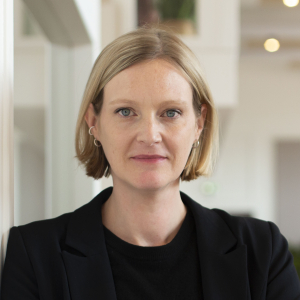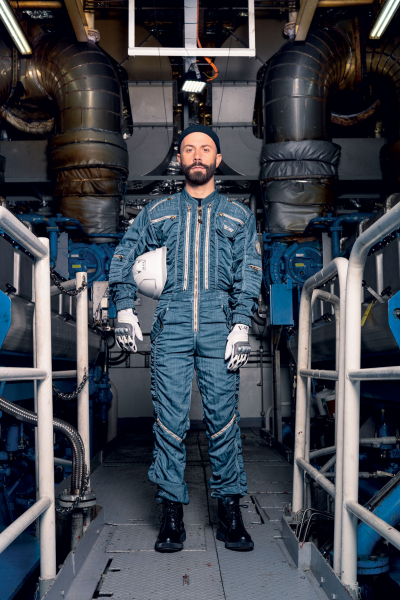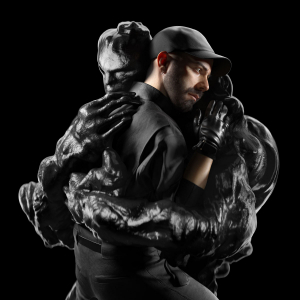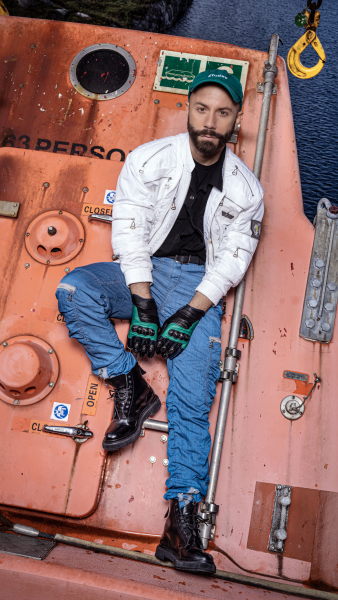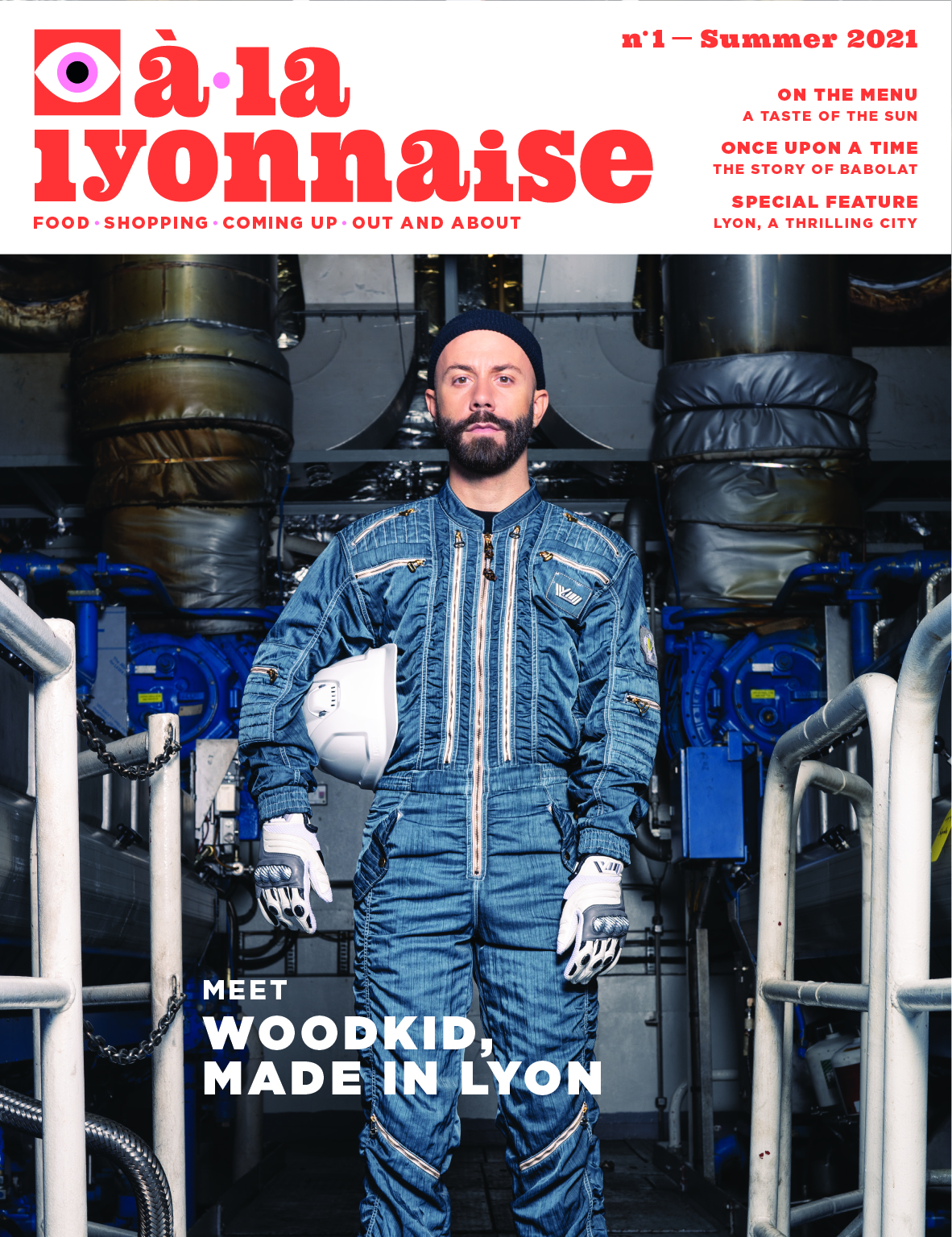Woodkid

A versatile artist and friend of global pop stars, local lad Woodkid will be returning home on the 20th, 21st and 22nd of July with a new album, S16, and a show that promises to be spectacular. We spoke with him to find out more.
You will be returning to the stage soon, following months with no live shows. How do you feel?
I have no reason to complain, it would be wrong. Is it difficult at times? Yes. But I’ve been able to work, be heard, promote my work and get lots of love from people through social networks.
We released an album during the pandemic. The first video dropped during the first lockdown. We don’t know if we did the right thing, but we did it with style and we’re quite proud of it. The most difficult thing has been feeling the fans’ pain at not being able to go to concert venues, theatres, cinemas…
I believe that culture is essential, contrary to what some would have us believe: it is just as vital as education is. Things seem to be heading in the right direction now, so it’s going to be great being able to convey something to people, whether they’re seated or standing.
For the new album, S16, how did you work? What was your approach?
I took my time. It was not a very easy album to make because it deals with things that are quite personal. I started working on it five years ago. Things weren’t as dire as they are now, with all the social injustice, communities withdrawing into themselves, tensions surrounding identity...At the time, I said to myself it was the right time to deal with these topics, because I felt that they would become important for me.
Except, I like to go against the tide, to remain a means of escape for people. If I had known what was coming, the period we would be entering, I might have done it differently, but the album was ready and I had to release it. So, it’s surprisingly fitting for its time.
Indeed, it’s totally topical…
Exactly. But sometimes, as an artist, it’s good to not be “totally topical”. We’re not just commentators, we can also take people on a journey, inspire their imagination, be a band-aid, a crutch… I see it more as an album that I’ll be proud of in ten years’ time, because it existed at that particular moment, and maybe people will come to me and say that it was a tough time for them, but thankfully that album was there.
You’re performing at the Nuits de Fourvière festival this summer. Is it a special one for you?
Yes. There are four or five places that are extra special for me and Lyon is one of them. I lived right next to the Théâtre Antique (translator’s note: ‘Ancient Theatre’, the festival’s venue) for several years, so it really feels like home. I went to the Nuits de Fourvière a lot when I was young and I never thought I would play there one day.
Will you be adapting your show for the setting of the Théâtre Antique, which you know well?
Last time, we adapted it because I was already well into my tour and we decided to share the stage with the entire Lyon National Orchestra. For this tour, Lyon is among the very first dates, so it’s going to be a pretty scary show for me, in a good way though. We will be presenting something very blue, very fresh, with the spontaneity that is always there in the first few concerts. It will not be so polished and far more vulnerable, intimate, deconstructed and experimental too. I think it’s going to be really interesting.
Could you describe your relationship with Lyon?
My home is Paris. Lyon is the city where I learned to become an artist, so it’s very important for me. When I say Lyon, I mean the Lyon region. Lyon and everything around it. I was born in Tassin-la-Demi-Lune, grew up there and spent my first years there. Later, I moved with my parents to Beaujolais, near Villefranche-sur-Saône, to a small village surrounded by vineyards. Then I returned to live in Lyon, near Saint-Just, to study at the Émile Cohl school of art, before leaving for Paris.
Do you come back occasionally? How do you see the city?
I come back to visit my parents. Lyon has not changed a lot. It’s like another version of Paris that’s stretched out and not so tall. Everything is wider: the metro, the streets, the Rhône and Saône… Everything is calmer too. It’s an elastic version of Paris on a more human scale.
Are the people of Lyon a difficult audience?
The audience in Lyon love me and I love them back. It’s almost cheating for me to play in Lyon.
Dernier album de Woodkid S16
Biographie
Woodkid: playing on home ground
Author, composer, musician, performer, director and graphic artist, Yoann Lemoine, better known as Woodkid, was born in Tassin-la-Demi-Lune in 1983. He studied at the École Émile Cohl art school in Lyon, before working in cinema and as a music video director, in particular for Yelle and Nolwenn Leroy. Following the release of his first EP in 2011, he collaborated with Lana Del Rey, Rihanna, Pharrell Williams, Harry Styles, Lykke Li and Nicolas Ghesquière. Released in 2020, S16 is his second album.
My address book
Where did Woodkif used to go when we was still Yoann Lemoine, a student at Emile Cohl art school ? Flash-back.
Le musée des Beaux-Arts de Lyon20 place des Terreaux,
Lyon 1er.
Fnac Bellecour“While I was a student at Émile Cohl, I spent a lot of time in the museum’s courtyard drawing, sketching… I think I must have drawn nearly all of the sculptures there!”
85 rue de la République,
Lyon 2e.
The Marché de la création“In my student days, I would often hang out around the Presqu’île, Saint-Just and Part-Dieu districts. The Fnac Bellecour shop was and remains an important place for me. I spent a lot of time there, as I was very studious… during the daytime at least.”
85 rue de la République,
Lyon 2e
Quai Romain-Rolland,
Lyon 5e.
Every Sunday from 8am to 5pm.
United Café“I had quite a few artist friends who exhibited here, so we used to hang out at this market a lot.”
Impasse de la Pêcherie,
Lyon 1er.
Restaurant Paul Bocuse“My youth in Lyon was also the gay nightlife scene and UC on the river bank.
Back then, there was also La Chapelle*, an incredible place with huge spaces, where the evenings were memorable. There was nowhere like it in Paris.”
*Located on Montée de Choulans and closed since.
40 quai de la plage,
Collonges-au-Mont-d’Or.
“I’m not familiar with contemporary chefs, but there’s always been something about Bocuse. It’s not the type of cuisine I eat now, but it remains an extraordinary heritage, almost like a museum today. I went the year before Monsieur Paul passed away, for Christmas dinner with my mum. It took some digesting, but it was an extraordinary moment.”
